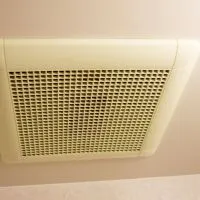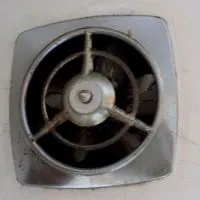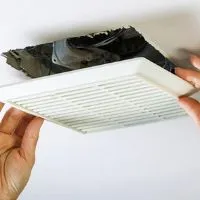Mold around bathroom fan. The mold problem around a bathroom fan is mainly caused by too much wetness and dampness. Usually, a ceiling fan is installed on a bathroom wall to stop the moisture and mold.
When you take a winter bath, the ceiling fan throws the moisture out of the bathroom. But when it is damaged, unfortunately, or stopped working due to debris and dust, it can not prevent mold from spreading over the walls.
The moisture will spread on the walls and become wet, enhancing quick mold around the bathroom fan. The most important thing is to stop the mold from spreading in the first place.
Whenever you take a bath in the bathroom, turn on the bathroom fan for twenty minutes at least so that all the moisture goes outside the bathroom.
If you are here on this page, then it means you are also facing the problem of mold on all sides of the bathroom fan. You are in the right place because this article will help you stop the mold in the bathroom.
Mold around bathroom fan
A mold is like moisture. When you bathe with hot water in the cold winter morning, the fog is settled on the walls and all sides of the bathroom fan and damages the walls and ceiling. Let’s read out what you can do to avoid this trouble.
1. Duct the ceiling fan to the exterior side
The first and most important thing to ensure when installing a ceiling fan in the bathroom is to duct the fan to the exterior side of the toilet.
It will help out the fog to escape from the bathroom after you take a shower with hot water in the winter season.
2. Size of the fan is correct
It is essential to install the fan according to the size of the bathroom. If your bathroom is large and you establish a tiny bathroom fan, it will be unable to extract all fog.
Therefore, always fix the appropriate size of the fan in the bathroom so that you will not have a future vent problem.
3. Open the door
Ensure to open the door for thirty minutes when you take a bath in the bathroom because it will also help remove the moisture gathered after the shower with hot water.
4. Clean the sewerage pipes
It is essential to clean the sewerage pipes because if the water does not drain properly, it will stand on the bathroom floor, and mold will spread on all sides of the walls and the ceiling fan.
Therefore, if you see the water is not draining quickly, make a solution of hot water and baking soda and pour it into the hole of the bathroom. It will help to clear the clogs.
5. Use the high gloss paint in the bathroom
If you see the walls in the bathroom are damaged with moisture and mold around the fan, then it’s time to paint the walls. Always use high-quality gloss paint on the walls because it resists much of the mold. It is super easy to clean the gloss paint and makes the surface very hard.
6. Protect the fan with attic-resistant material
It is also essential to protect the bathroom fan with insulation material. It will stop the extra cold place above the ceiling of the bathroom.
7. Clean the bathroom
The proper maintenance of the bathroom fan is essential because all the debris, dirt, and moisture are removed from the bathroom.
So make it your habit to clean the toilet after every week, especially in the winter season when there are more chances of mold spread around the bathroom fan.
8. Open the window after shower
After you shower, open the bathroom window because it will remove the fog and moisture from the bathroom.
9. Consult with an expert
If the mold is out of control and keeps damaging the fan walls, don’t waste time and consult with an expert to solve the issue. Not managing the decay can free the mold spores in the home.
Stop BATHROOM Condensation & Mould in a shower
Conclusion
The final words are that if you see the mold around the bathroom fan, it is primarily due to the ventilation problems. The fan has significantly less decay if you have the proper duct system. I hope the above suggestions will help you to solve the trouble.
Related Guides



